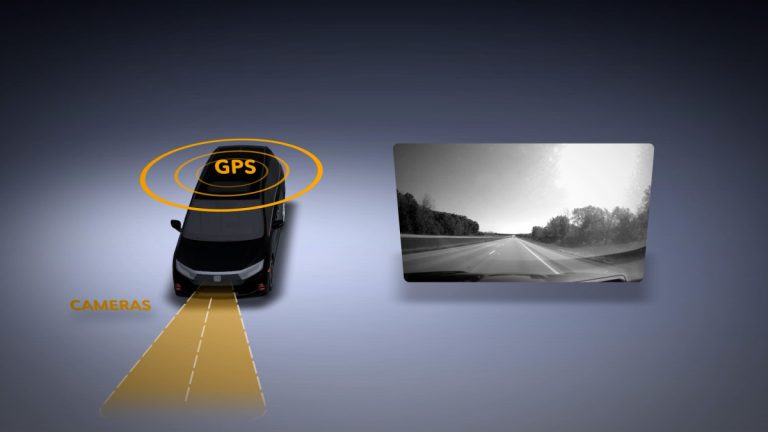One of the obstacles to a fully autonomous future are the roads upon which theoretical autonomous vehicles would drive. Cameras and sensors use the painted lane lines to help them trace a path and help cars stay in their respective lanes. If you’ve ever driven a car with some level of lane-keeping or lane-following assistance, you might’ve noticed that without any lane markings, the system becomes relatively useless.
So, how does one improve matters so you can use driver assistance features in more situations? The answer is relatively simple in concept. Road operators need to maintain our roads better and with driving assistance features in mind. Honda knows this too, and it’s just devised a system to aid road workers in doing exactly that.
The Honda Research Institute is officially beginning a road condition monitoring pilot program. What does that mean? It means that Honda has devised a program that runs on its cars to constantly monitor and evaluate lane marking conditions. Using GPS, sensors and cameras, Honda’s pilot program cars will drive around and collect data on the state of our lane markings. Specifically, the program will be evaluating Ohio’s state of affairs. Honda hasn’t said if it will extend the program beyond Ohio yet, but if successful, we don’t see why it couldn’t expand.
Honda will use four grades for lane markings: green, yellow, grey and red. Green and yellow means “ideal to good.” Grey means there are no markings, and red means “need repair.” The rankings are paired with latitude and longitude data, video clips and images. It’s all then sent over to the Ohio Department of Transportation, and we can then hope the government decides to fix the areas needing repair. Of course, our faith in road operators to maintain roads properly in this country is not absolute, but at least Ohio will have a better grasp of what needs doing.
“Real-time, high-accuracy roadway data captured from connected vehicles has the potential to improve the process of identifying, reporting, and more quickly repairing hazardous road conditions,” says Paritosh Kelkar, scientist at Honda Research Institute.
In addition to reporting lane conditions to Ohio, this system has the capability of reporting a warning to other Honda vehicles. Your Honda could theoretically access the lane marking data in real time using an internet connection and your GPS coordinates and warn you when a section of poor markings is coming up, prompting you to take back full control from the lane-following system.
Lastly, Honda teases out that it could expand this program to “monitor other types of road conditions.” What those other conditions are, we don’t know yet.
Related video:










